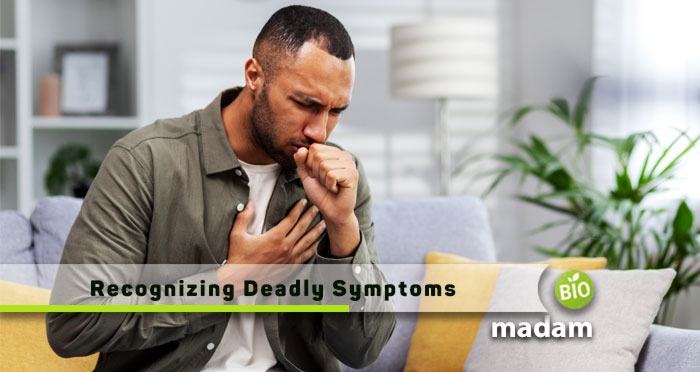Imagine sitting at home on an ordinary evening, and suddenly, an unexpected wave of pain washes over you. Is it a temporary ache, or could it be a sign of something more dire?
It’s a terrifying thought that most people confront at some point in their lives. You’re not alone in that moment of uncertainty, debating whether to rush to the emergency room or wait and let it heal on its own.
Understanding when a symptom is genuinely life-threatening versus something less severe can make a difference. Not only could it save your life or the life of a loved one, but it also offers peace of mind in those heart-pounding moments.
In this article, you’ll be on a journey to arm yourself with knowledge that could prove crucial in such times of uncertainty. Knowledge is power, and in medical emergencies, it’s a beacon that can guide you through the stormiest nights. But when in doubt, always prioritize your safety and consult a medical professional. Keep reading to learn more!
Chest Pain and Discomfort
Chest pains and discomfort can be alarming, and rightly so. They can signal anything from a minor issue to a life-threatening condition. Here are the different types of chest pain and how to differentiate them:
- Angina: Often described as a squeezing sensation, this usually results from reduced blood flow to the heart, which can result from emotional stress or engaging in physical activity.
- Heartburn: This burning sensation behind your breastbone can be mistaken for heart-related pain. It’s caused by stomach acid flowing back into your esophagus.
- Panic Attack: Sudden episodes of intense fear can lead to chest pain, rapid heartbeat, and difficulty breathing.
While it’s crucial not to jump to conclusions, it’s essential to know when to seek help. Take note of your symptoms and ensure to reach out to a healthcare professional if they persist.
Difficulty Breathing
Breathing should be second nature, but when it becomes a struggle, it’s a clear sign that something’s wrong. Here’s what it might indicate:
- Asthma Attack: Shortness of breath can be a sign of an asthma flare-up. If you have asthma, use your rescue inhaler and seek medical attention if symptoms don’t improve.
- Allergic Reaction: If you’ve ingested or come into contact with an allergen, difficulty breathing might accompany other signs of anaphylaxis, such as hives or swelling. This is a medical emergency, be it at any stage of allergic reaction.
- Chronic Obstructive Pulmonary Disease (COPD): A chronic lung disease where inflamed airways make breathing difficult. If you have COPD and experience a sudden worsening of symptoms, it’s crucial to get help.
Whether it’s due to a known condition or a sudden onset, it’s crucial to recognize the severity and get the necessary help. Your responsiveness could make a vital difference.
Sudden and Severe Headaches

Everyone gets headaches from time to time, but not all headaches are created equal. When a headache comes on suddenly and is more intense than any you’ve experienced before, it’s not something to brush off.
Most headaches, like tension headaches, develop gradually. However, if you find yourself struck by an abrupt and intense pain, often described as a ‘thunderclap,’ this is a red flag.
A sudden, severe headache can signal a range of critical conditions:
- Ruptured Aneurysm
- Meningitis
- Blood Pressure Spike
- Stroke
While it might not always be one of these serious conditions, it’s essential to rule them out. Don’t wait for things to get worse. Trust your instincts and get the care you need.
Numbness in the Arm, Leg, or Face
When you encounter sudden numbness or weakness, particularly in the face, arm, or leg, it’s essential to take it seriously. These symptoms, especially when only appearing on one side of the body, may indicate a medical emergency. Here’s what you need to know:
- Immediate Response is Key: If you or someone around you begins to experience these symptoms suddenly, don’t delay seeking medical attention. Quick action can lead to better outcomes.
- Possible Indication of A Stroke: One of the primary concerns with these symptoms is a stroke. The faster you react, the better the chances for recovery.
- Other Possible Causes: While stroke is a significant concern, other conditions can also lead to numbness or weakness, such as the following:
- Multiple Sclerosis
- Migraine
- Pinched Nerve
- Peripheral Neuropathy
Remember, numbness or weakness in the face, arm, or leg shouldn’t be ignored. By recognizing these signs and acting quickly, you’re taking an essential step in ensuring the best possible outcome for yourself or someone else.
Uncontrolled Bleeding
Accidents and injuries can range from minor cuts to more significant traumas. One of the most alarming situations is when there’s uncontrolled bleeding. Understanding the severity and knowing the steps to take can be lifesaving.
- Recognize The Danger: When you see blood pooling or spurting from a wound, it indicates that a major blood vessel might be damaged. Sometimes, even minor injuries can bleed excessively if they’re in areas with many blood vessels, like the scalp.
- Immediate Steps: If you’re helping others, ensure you’re wearing gloves or use a barrier to protect both of you. Then, place a clean cloth or bandage on the wound and press down firmly to control the bleeding. If the blood soaks through, don’t remove the initial cloth. Instead, add more layers.
- Know When to Seek Help: If the bleeding continues for more than 10 minutes with direct pressure, call 911 or get to an emergency room. Pay attention to signs of shock, including paleness, clammy skin, rapid heartbeat, or confusion. These symptoms indicate a need for immediate medical attention.
Taking swift action and understanding the steps to manage bleeding can make a significant difference in outcomes. Always prioritize safety, and when in doubt, don’t hesitate to seek professional help.

Abdominal Pain
When you experience abdominal pain, it’s easy to dismiss it as something you ate or just a passing cramp. However, such discomfort can be a warning sign of a more severe condition, such as ulcerative colitis, Crohn’s disease, etc. Here’s what you need to know:
- Nature of Pain: First, assess the nature of the pain. Is it sharp, cramp-like, or burning? Does it come and go or persist? The type of pain can hint at its root cause.
- Duration of Pain: A brief pain might be due to gas or indigestion. However, if the pain persists for hours or intensifies, don’t wait – seek medical attention.
- Trauma or Injury: Did you recently sustain an injury to your abdomen? Even if it seemed minor at the time, complications might arise later. Always get any trauma checked out.
When faced with intense abdominal pain, especially if it’s accompanied by any of the symptoms or factors listed above, don’t brush it off. Seek medical attention promptly. It might be a simple digestive issue, or it could be something more serious.
The Takeaway
In today’s fast-paced world, it’s easy to dismiss or overlook symptoms, hoping they’ll go away on their own. However, when it comes to these potential life-threatening signs, it’s better to be overly cautious than regretful.
Recognizing the severity of these signs and symptoms and seeking immediate care can mean the difference between life and death. Always trust your instincts and prioritize your health.

Hi, they call me Jenna, and I am also known for achieving a gold medal during my Ph.D. in science life. I always had a dream to educate people through my utmost writing hobby. So, I chose this blogging path, and Biomadam gave me this opportunity to present for them. I now stand to entertain you. Continue reading my articles & discuss if you’ve any confusion through the comment section below.

